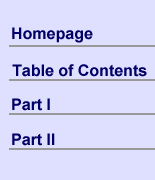

| Introduction |
| From Archimedes to Newton, attempts to teach elementary calculus, as well as the necessary trigonometry and analytic geometry, from within its "historical flow". The flow is historical, but the emphasis is on doing the mathematics in a pedagogically effective way. This means that the material is developed from within the relevant context: that of the Greek thinkers, or that of Copernicus, Galileo, Kepler and Descartes, or that of Newton and Leibniz. But, it also means that the notation is modern and that the material is selected so as to cover the basics of the subject. Parts of the text, for example the section on Newton's Principia, stay close to the spirit of the original arguments, but expand and clarify them considerably so as to make them understandable. Other discussions, such as that on analytic geometry, leave the original efforts out altogether. Calculus is developed by fusing essential insights of both Leibniz and Newton together into a complete "short calculus". This starts from scratch, is free of most theoretical "baggage", and concentrates on the intuitive grasp of the basic elements. What will have emerged is a basic mathematics course "as it can be learned from the masters." It is surrounded by the important scientific concerns of the times, and includes, at times on the periphery and at times interwoven within it, very important segments of our scientific and cultural history. |